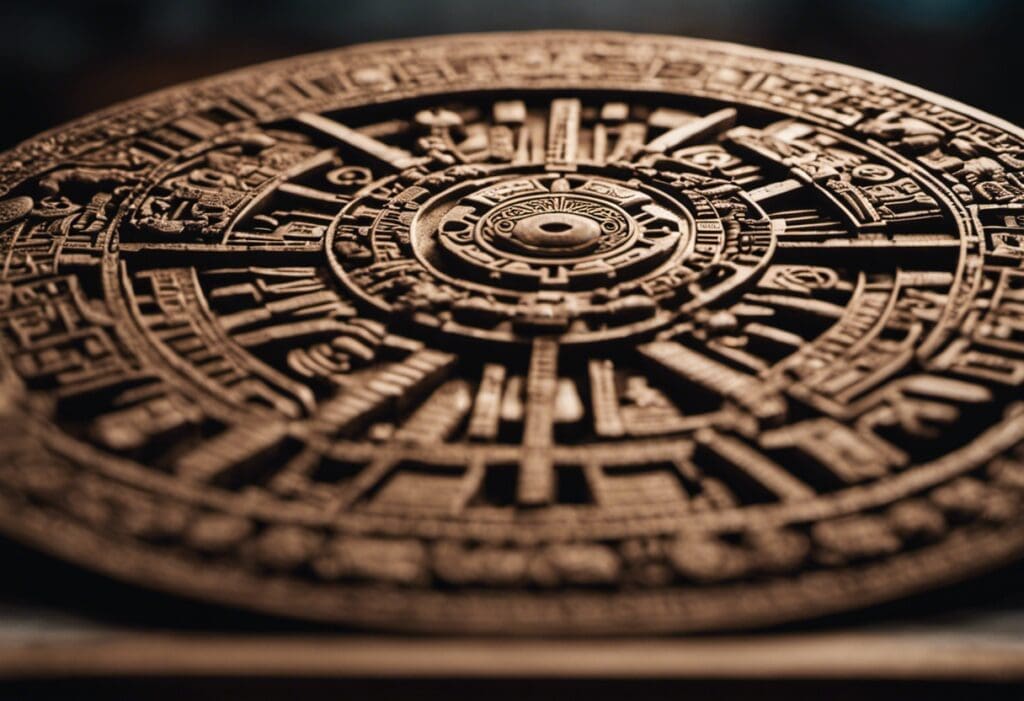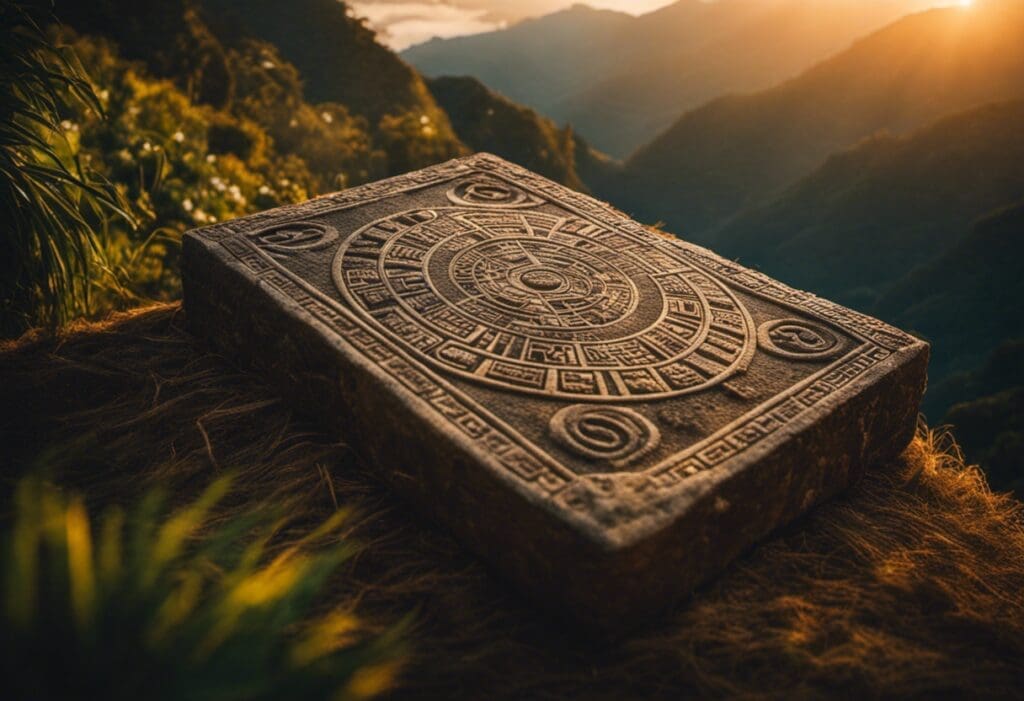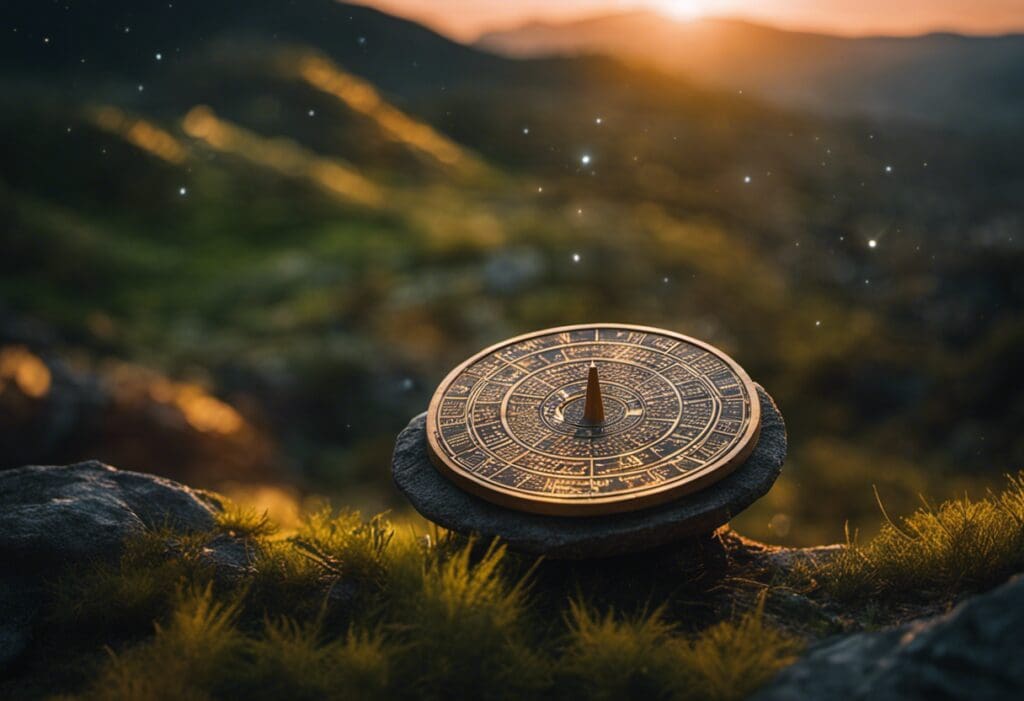In the realm of ancient civilizations, the Inca and Mayan cultures are renowned for their sophisticated calendar systems. These calendars, which were not only used to mark time but also played a significant role in shaping their respective societies, offer a fascinating subject for comparative study.
By examining the origins, features, astronomical alignments, and cultural impact of the Inca and Mayan calendars, this article aims to shed light on the intricate workings of these ancient civilizations and the enduring legacy of their calendrical traditions.
Key Takeaways
- The Inca and Mayan civilizations both had complex calendar systems based on lunar and solar cycles.
- Astronomical observations played a significant role in both Inca and Mayan cultures, with the Inca aligning their cities and temples with the sun’s path and the Mayans tracking Venus movements and predicting eclipses.
- The calendars of both civilizations regulated important activities such as agricultural practices and religious ceremonies.
- The calendars had a profound impact on societal and cultural aspects, including social hierarchies, community organization, trade networks, and the development of art, music, and dance.
Ancient Inca Calendar: Origins and Features


The origins and features of the ancient Inca calendar are a subject of great interest and scholarly research. The Inca civilization, which thrived in the Andes region of South America from the 13th to the 16th centuries, had a highly sophisticated understanding of time and astronomy. The Inca calendar, known as the ‘quipu,’ was based on a combination of lunar and solar cycles.
One of the key features of the Inca calendar was its use of a lunar month, which consisted of 29 or 30 days. This lunar month was then combined with a solar year, which was divided into 12 months. The Inca calendar also included a system of intercalary days, which were used to keep the calendar in alignment with the solar year.
The origins of the Inca calendar can be traced back to earlier Andean civilizations, such as the Tiwanaku and Wari cultures. However, the Inca made significant advancements in calendar design, incorporating their own religious beliefs and cultural practices.
The Inca calendar played a crucial role in the religious and agricultural practices of the Inca civilization. It helped them determine the best times for planting and harvesting crops, as well as for conducting religious ceremonies and festivals. The calendar also played a role in the social and political organization of the Inca empire, helping to establish a sense of unity and order among its subjects.
Mayan Calendar System: Structure and Significance


Mayan civilization’s calendar system, known for its intricate structure and profound significance, provides a fascinating subject for study and analysis. The Mayan calendar was a complex system that consisted of several interlocking cycles, allowing the ancient Mayans to track time with remarkable accuracy.
At the core of the Mayan calendar system were the Long Count and the Tzolk’in calendars. The Long Count calendar was based on a series of cycles, with each cycle representing a specific unit of time. This calendar was essential for recording historical events and predicting future occurrences.
The Tzolk’in calendar, on the other hand, was a 260-day ritual calendar that played a significant role in Mayan religious ceremonies. It consisted of 20 periods, each comprising 13 days, and was utilized for divination and determining favorable and unfavorable days for various activities.
Moreover, the Mayan calendar system incorporated a number of symbolic elements, such as glyphs and numerology, which added layers of meaning to their understanding of time.
The Mayans believed that time was cyclical and that each cycle possessed its own unique energy and significance. As a result, the Mayan calendar system allowed them to make predictions about future events, including celestial alignments, agricultural cycles, and even individual destinies.
Astronomical Alignments: Comparing Inca and Mayan Observations


Interestingly, both the Inca and Mayan civilizations made significant observations of astronomical alignments, providing valuable information about their respective cultures’ understanding of the cosmos. The careful study of celestial bodies played a crucial role in both societies, influencing their religious beliefs, agricultural practices, and calendar systems. Here are five key examples of the astronomical observations and celestial alignments made by the Inca and Mayan civilizations:
- The Inca closely monitored the movements of the sun and built their cities and temples in alignment with its path. The most famous example is Machu Picchu, where specific structures were designed to align with the sunrise and sunset during the solstices and equinoxes.
- The Mayans developed a keen understanding of celestial events and used their observations to create a highly accurate calendar. Notably, they tracked the movements of Venus, which they associated with warfare and sacrifice, and used it to predict the future.
- Both civilizations recognized the importance of the Pleiades star cluster. For the Inca, it signaled the start of the agricultural season, while the Mayans used it to determine the beginning of the new year.
- The Inca also observed the movements of the moon and used lunar alignments to mark important events, such as religious ceremonies and agricultural activities.
- The Mayans had an intricate understanding of the solar system and were able to accurately predict eclipses, a feat that demonstrates their advanced knowledge of celestial mechanics.
These astronomical observations and celestial alignments highlight the deep connection between the Inca and Mayan civilizations and the cosmos. Through their careful observations, both cultures developed sophisticated systems that allowed them to navigate the natural world and make sense of the universe around them.
Rituals and Festivals: How Calendars Shaped Inca and Mayan Cultures


As calendars played a central role in the daily lives of the Inca and Mayan civilizations, their intricate systems of tracking time and celestial events shaped the rituals and festivals that were integral to their respective cultures.
The Inca calendar, known as the Tawantinsuyu, was a highly organized system that regulated the timing of important agricultural activities and religious ceremonies. The rituals associated with the Inca calendar were closely tied to the agricultural cycle and the worship of nature deities. For example, the Inti Raymi, or Festival of the Sun, was a grand celebration held during the winter solstice to honor the sun god Inti and ensure a successful harvest. This festival included elaborate processions, music, dancing, and sacrifices.
Similarly, the Mayan calendar was closely intertwined with religious beliefs and was used to determine the timing of various festivals and ceremonies. The Mayans celebrated a wide range of festivals throughout the year, such as the K’atun ending ceremony, which marked the conclusion of a 20-year cycle. These festivals involved rituals, feasting, music, and dance, and were often accompanied by sacrifices, both animal and human. The Mayans believed that performing these rituals and festivals was essential for maintaining the harmony between the physical and spiritual realms.
Legacy and Influence: Understanding the Lasting Impact of Inca and Mayan Calendars


The enduring legacy and profound influence of the Inca and Mayan calendars can be understood through their impact on various aspects of ancient society, from agriculture and religious practices to societal structures and cultural traditions.
These calendars played a pivotal role in shaping the cultural practices of the Inca and Mayan civilizations, leaving a lasting impression on their societies that can still be observed today.
The historical significance of the Inca and Mayan calendars is evident in the following ways:
- Agricultural Practices: The calendars provided vital information about the seasons, allowing the people to determine the best time for planting and harvesting crops. This knowledge was crucial for ensuring food security and agricultural sustainability.
- Religious Rituals: The calendars guided the timing of important religious festivals and ceremonies, providing a framework for the worship of deities and the performance of sacred rituals. These rituals were integral to the spiritual beliefs and practices of both civilizations.
- Societal Structures: The calendars helped to establish social hierarchies and organize community activities. The ability to track time and plan events based on the calendar was essential for coordinating collective efforts such as construction projects or military campaigns.
- Cultural Traditions: The calendars influenced the development of art, music, dance, and other cultural expressions. They provided a foundation for creating intricate and meaningful artistic representations, which were often imbued with spiritual and symbolic significance.
- Historical Significance: The Inca and Mayan calendars are invaluable sources of historical information. By studying the calendars, researchers have gained insights into the astronomical knowledge, mathematical abilities, and intellectual achievements of these ancient civilizations.
Conclusion
In conclusion, the study of ancient Inca and Mayan calendars reveals fascinating insights into the cultures and civilizations of these ancient societies.
Despite their geographical and cultural differences, both calendars were intricate and sophisticated systems that demonstrated a deep understanding of astronomical observations.
The calendars played a crucial role in shaping the rituals and festivals of the Inca and Mayan cultures, leaving a lasting legacy that continues to influence our understanding of time and celestial events.
Through their calendars, these ancient civilizations showcased their advanced knowledge and left a lasting impact on the world.




